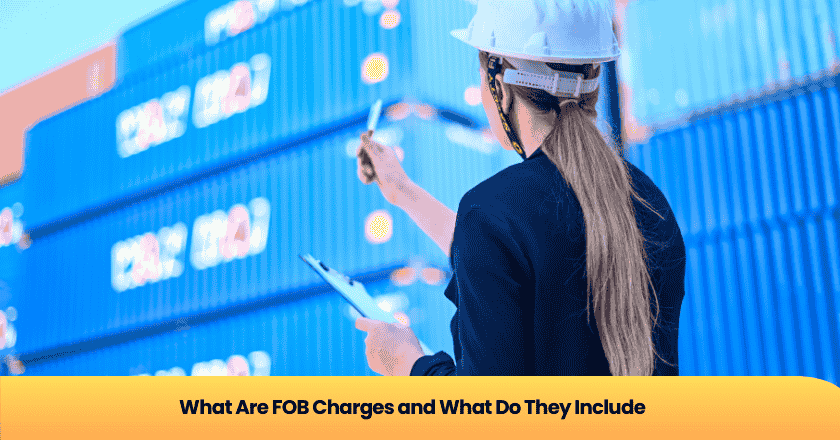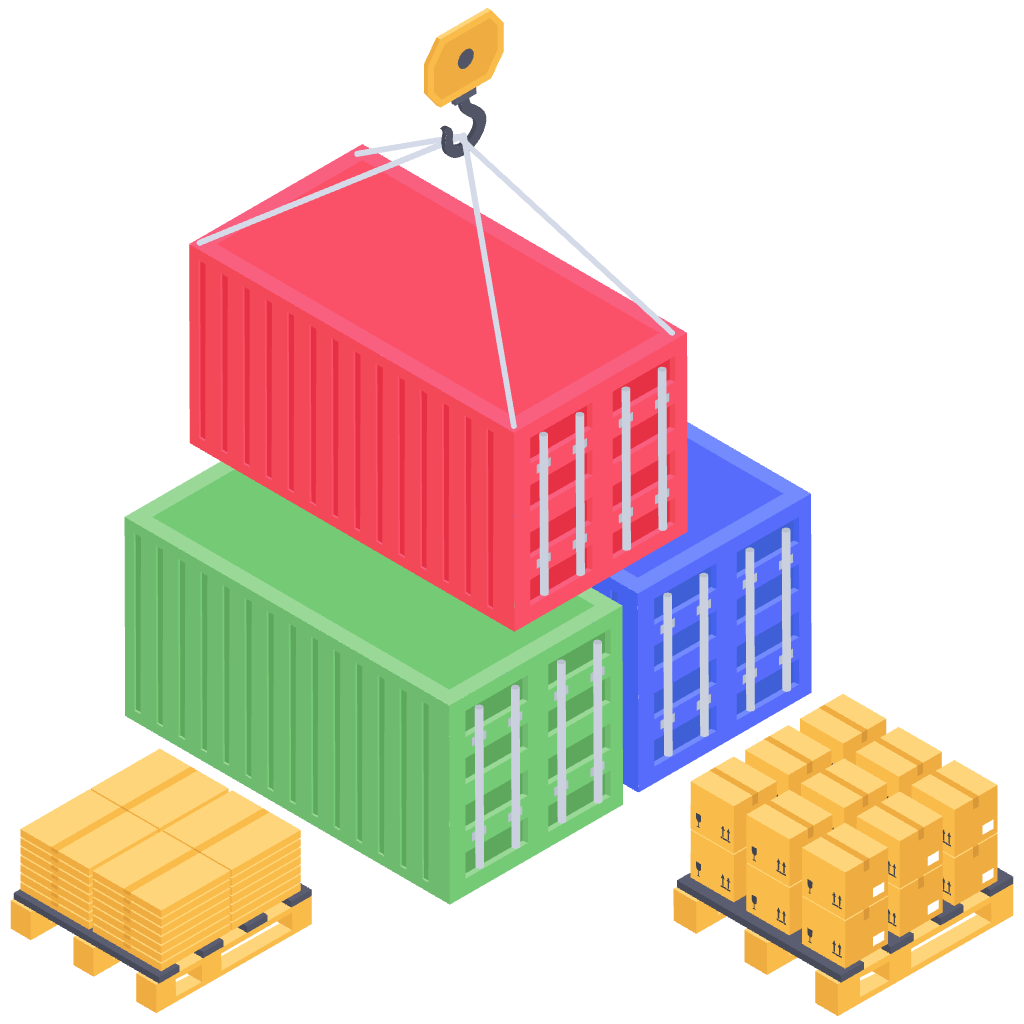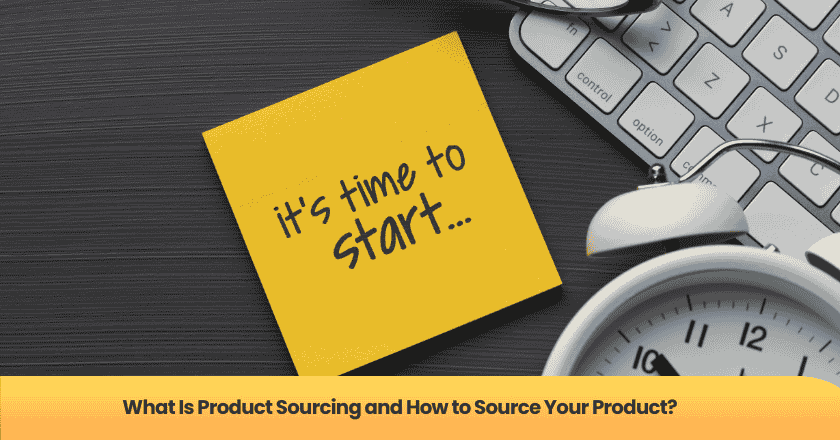
You need to know what is fob charges before you negotiate any international trade. FOB means Free on Board. When you ask what is fob charges, you refer to all costs up to the point the goods are loaded onto the shipping vessel. These fob charges include local transport, packaging, and handling at the port. If you do not understand what is fob charges, you risk paying for extra costs or missing key details in your contract. You gain control and clarity when you know the exact fob terms.
What Is FOB Charges?
FOB Meaning
When you see the term FOB in shipping documents, you encounter one of the most important international commercial terms. FOB stands for "Free on Board." You use this term to define the point where the seller's responsibility ends and yours begins. In most cases, FOB refers to the moment when goods pass the ship's rail at the port of shipment. You need to know what is fob charges because these charges cover all costs up to that point.
You often see FOB used in contracts and invoices. The term helps you understand who pays for which part of the shipping process. You avoid confusion and disputes when you clarify FOB terms before finalizing any deal. You should always check if the contract specifies FOB shipping point or FOB destination, as this affects your cost and risk.
Tip: Always confirm the exact FOB location in your contract. This detail determines when you take ownership and responsibility for the goods.
Free on Board Explained
Free on board means the seller handles all costs and risks until the goods are loaded onto the vessel at the agreed port. You pay for everything that happens after that point. The seller covers manufacturing, packaging, local transport to the port, export documentation, and loading fees. You take over once the goods are on the ship.
You might also hear the term freight on board, which some people use interchangeably with free on board. However, free on board is the official term recognized in international commercial terms. You should use the correct terminology to avoid misunderstandings.
Here is a simple breakdown of what FOB includes and excludes:
| Included in FOB Charges | Not Included in FOB Charges |
|---|---|
| Manufacturing costs | Ocean freight |
| Raw materials | Insurance during transit |
| Labor | Unloading at destination port |
| Packaging | Import duties and taxes |
| Local transport to port | Delivery to final destination |
| Loading onto vessel | |
| Export documentation |
You gain clarity and control when you understand what is fob charges and how free on board works. You protect your interests by knowing exactly where your responsibility starts.
FOB Types
Understanding the different types of fob shipping terms helps you manage your shipping costs and responsibilities. You often see two main types: fob shipping point and fob destination. Each type defines when you take ownership of the goods and who pays for which part of the shipping process.
FOB Shipping Point
You encounter fob shipping point, also called fob origin, in many international trade contracts. Under fob shipping point, you take ownership of the goods as soon as the seller loads them onto the shipping vessel at the port of shipment. The seller covers all costs up to this point, including manufacturing, packaging, and local transport to the port. Once the goods cross the ship’s rail, you become responsible for all further shipping costs and risks.
You need to pay attention to fob shipping point because it shifts responsibility early in the shipping process. If you use fob origin, you must arrange and pay for ocean freight, insurance, and unloading at the destination. You also handle any issues that arise during transit. Many buyers prefer fob shipping point when they want more control over the shipping process and costs.
Note: Always check your invoice for the exact fob shipping point location. This detail affects your total shipping expenses and risk exposure.
You see fob shipping point used in contracts that specify fob origin or fob port of shipment. These terms mean the same thing and indicate that you take over as soon as the goods leave the seller’s hands at the port.
FOB Destination
With fob destination, the seller keeps responsibility for the goods until they reach your specified location. You do not take ownership until the goods arrive at your warehouse or another agreed destination. The seller pays for all shipping costs, including freight on board, insurance, and delivery to your door.
You benefit from fob destination if you want the seller to handle all shipping arrangements. This option reduces your risk and simplifies your logistics. You only pay for the goods once they arrive safely at your location.
You should compare fob shipping point and fob destination before finalizing your contract. Each option offers different advantages depending on your shipping needs and risk tolerance.
FOB Charges Breakdown
Included Costs
When you review fob shipping terms, you need to understand exactly what costs are included in the fob price. The seller covers all expenses up to the point where the goods are loaded onto the vessel at the port of shipment. You see these costs listed on invoices and contracts, and they form the basis of your negotiation.
Here are the typical fob costs included in the fob price:
l Manufacturing Costs: The seller pays for the production of the goods. This includes factory overhead and direct expenses.
l Raw Materials: All materials used to make the product are part of the fob price.
l Labor: Wages and benefits for workers involved in manufacturing are included.
l Packaging: The seller provides suitable packaging to protect the goods during local transport and loading.
l Local Transport to Port: The seller arranges and pays for moving the goods from the factory or warehouse to the port of shipment.
l Loading onto Vessel: The seller handles all charges for loading the goods onto the ship. This step marks the transfer of responsibility.
l Export Documentation: The seller prepares and pays for all necessary export paperwork, such as customs declarations and certificates.
l Terminal Handling Charges: Fees for handling the goods at the port terminal before loading are part of the fob shipping costs.
Tip: Always request a detailed breakdown of fob costs from your supplier. This helps you verify each item and avoid hidden charges.
You gain a clear understanding of your total fob shipping costs when you check each component. This knowledge allows you to compare suppliers and negotiate better terms.
| Included in FOB Price | Description |
|---|---|
| Manufacturing | Production expenses |
| Raw Materials | All input materials |
| Labor | Worker wages and benefits |
| Packaging | Boxes, crates, pallets |
| Local Transport to Port | Trucking or rail to port |
| Loading onto Vessel | Stevedoring and port labor |
| Export Documentation | Customs, certificates, paperwork |
| Terminal Handling | Port fees before loading |
Excluded Costs
You need to know which costs are not covered by fob shipping terms. Once the goods cross the ship’s rail at the port of origin, you become responsible for all further expenses. These excluded costs can add up quickly if you do not plan ahead.
Here are the main costs not included in the fob price:
1. International Shipping: You pay for ocean freight charges from the port of origin to the destination port. This is a major part of your total shipping costs.
2. Insurance During Transit: You must arrange and pay for insurance to protect your goods while they are in transit.
3. Unloading at Destination Port: You cover the cost of unloading the goods when they arrive at the destination port.
4. Import Duties and Taxes: You pay any customs duties, VAT, or other taxes required by the destination country.
5. Delivery to Final Destination: You arrange and pay for transport from the destination port to your warehouse or customer.
Note: Always calculate these excluded costs before agreeing to a fob price. This ensures you know your total landed cost and avoid surprises.
You see the difference between fob shipping point and fob destination when you review these excluded costs. With fob origin, you take on more responsibility and risk after the goods leave the seller’s port. You need to factor in all shipping costs, insurance, and local delivery to get an accurate picture of your total expenses.
| Not Included in FOB Price | Who Pays? |
|---|---|
| Ocean Freight Charges | Buyer |
| Insurance During Transit | Buyer |
| Unloading at Destination Port | Buyer |
| Import Duties and Taxes | Buyer |
| Delivery to Final Destination | Buyer |
You protect your business by understanding both included and excluded costs in fob shipping. This knowledge helps you negotiate the best fob price and manage your shipping budget effectively.
Impact on Buyers and Sellers
Risk Transfer
When you negotiate fob shipping terms, you decide exactly when risk moves from the seller to you. The point of risk transfer depends on whether you choose fob shipping point or fob destination. With fob shipping point, you accept responsibility as soon as the goods are loaded onto the vessel at the port of origin. Any damage or loss during transit becomes your concern. You must plan for insurance and monitor the shipment closely.
If you select fob destination, the seller keeps the risk until the goods reach your specified location. You gain peace of mind because the seller handles any issues that occur during shipping. You only take responsibility once the goods arrive safely at your warehouse or another agreed destination. This difference in risk transfer can affect your overall shipping strategy and insurance needs.
Tip: Always clarify the exact risk transfer point in your contract. This detail protects your interests and helps you avoid disputes.
Cost Responsibility
You need to understand how fob shipping terms affect your cost responsibility. With fob shipping, the seller pays for all expenses up to the loading of goods onto the vessel. You cover costs for ocean freight, insurance, unloading, and delivery after that point. The breakdown of cost responsibility changes based on whether you use fob shipping point or fob destination.
l Under fob shipping point:
You pay for international shipping, insurance, and all costs after the goods leave the port.
You manage customs clearance and final delivery.
l Under fob destination:
The seller pays for shipping, insurance, and delivery to your location.
You only pay for the goods once they arrive.
| FOB Term | Who Pays for Shipping After Loading? | Who Bears Risk During Transit? |
|---|---|---|
| fob shipping point | Buyer | Buyer |
| fob destination | Seller | Seller |
You improve your budgeting and logistics planning when you understand your cost responsibility under each fob shipping term. You can negotiate better deals and avoid unexpected expenses by reviewing these details before signing any contract.
Find and Calculate FOB Charges
Identifying on Invoices
You need to know how to spot fob charges on your invoices and contracts. Look for the term "FOB" followed by a location, such as "FOB Shanghai" or "FOB Los Angeles." This tells you where the seller's responsibility ends and yours begins. The fob price appears as a separate line item or as part of the total cost. You may also see a breakdown of included costs, such as packaging, local transport, and export documentation.
Check your invoice for these details:
l The exact fob location (port or city)
l The fob price listed clearly
l A breakdown of what the fob price covers
l Any notes about excluded costs, like freight charges or insurance
Tip: Always review your contract and invoice together. This ensures you understand what you pay for and what you need to arrange yourself.
Simple Calculation Example
You can calculate your total landed cost by starting with the fob price and adding other expenses. Here is a basic example:
Suppose you buy 100 units of a product at a fob price of $50 per unit from a supplier in Shanghai. The invoice states "FOB Shanghai." You arrange for ocean freight charges of $500 and insurance of $100. When the goods arrive, you pay $200 for unloading and $150 for delivery to your warehouse.
Calculation:
| Item | Cost |
|---|---|
| FOB price (100 x $50) | $5,000 |
| Freight charges | $500 |
| Insurance | $100 |
| Unloading | $200 |
| Delivery to warehouse | $150 |
| Total Landed Cost | $5,950 |
You see that the fob price covers only the costs up to the port of shipment. You must add all other shipping costs to find your true landed cost. This approach helps you budget accurately and avoid surprises.
FOB vs Other Shipping Terms
FOB vs CIF
You often see confusion when comparing fob versus cif. Both terms define who pays for shipping and when risk transfers, but they offer different levels of responsibility. When you choose fob, you pay for ocean freight, insurance, and unloading after the goods leave the port. You control the shipping process and manage costs directly. With cif, the seller handles the cost, insurance, and freight until the goods reach your destination port. You receive goods with insurance coverage during transit, which reduces your risk.
Consider the following table to compare fob and cif:
| Aspect | FOB | CIF |
| Who arranges freight | Buyer | Seller |
| Who pays insurance | Buyer | Seller |
| Risk transfer point | At port of shipment | At destination port |
| Control over shipping | High | Lower |
Tip: If you want more control and flexibility, fob may suit your needs. If you prefer less risk and easier logistics, cif offers a safer option.
You should understand that cif includes insurance and freight in the price. You do not need to arrange these services yourself. When you compare fob versus cif, you see that cif simplifies the process for buyers who want less involvement in shipping arrangements. You pay a single price and receive goods covered by insurance.
Choosing the Right Term
You need to select the shipping term that matches your business goals. If you want to manage shipping and insurance, fob gives you control. You negotiate freight rates and choose your insurance provider. If you want the seller to handle logistics, cif provides convenience. You avoid the hassle of arranging transport and insurance.
Consider these factors when choosing between fob and cif:
l Your experience with international shipping
l Your ability to negotiate freight and insurance rates
l Your risk tolerance
l Your need for control over logistics
Note: Always review your contract to confirm the shipping term. This step protects your interests and clarifies cost responsibility.
You should discuss options with your supplier before finalizing the deal. If you want to minimize risk and paperwork, cif may be the better choice. If you want to optimize costs and manage logistics, fob offers more flexibility. You make the best decision when you understand the differences between fob and cif.
You now understand what FOB charges include and why they matter. Knowing your cost and risk responsibilities helps you avoid surprises in international trade. Always review your contracts for clear FOB terms.
l Ask for a detailed breakdown of included and excluded costs.
l Confirm the exact point where risk transfers.
l Compare FOB with other shipping terms like CIF to find the best fit for your needs.
Tip: Careful negotiation and verification of FOB terms protect your business and improve your bottom line.
FAQ
What does "FOB" stand for in shipping?
FOB means "Free on Board." You see this term in international trade. It defines when the seller's responsibility ends and yours begins during shipping.
How do you find FOB charges on an invoice?
You look for "FOB" followed by a location, such as "FOB Shanghai." The invoice lists the FOB price and may show included costs like packaging and local transport.
Who pays for insurance under FOB terms?
You pay for insurance once the goods are loaded onto the vessel. The seller covers costs only up to the port of shipment. You arrange coverage for transit risks.
Can you negotiate FOB charges with suppliers?
You can negotiate FOB charges. Ask for a detailed breakdown of included costs. Request clarification on local transport, packaging, and documentation fees before finalizing your contract.
What is the main difference between FOB and CIF?
FOB requires you to arrange and pay for shipping and insurance after the goods leave the port. CIF means the seller handles shipping and insurance until the goods reach your destination port.
Get Started Today
Let's Turn Your Sourcing Goals into RealityWeChat:+86 15157124615
WhatsApp:+86 15157124615
Address:Building 10 #39 Xiangyuan Road, Hangzhou, China




